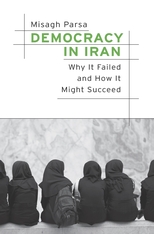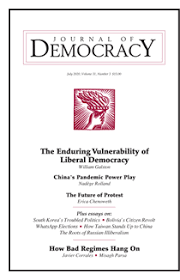#Iran must release human rights defender #NargesMohammadi, reportedly ill with #coronavirus symptoms, and other arbitrarily detained individuals before it is too late – UN experts.
Ms. Mohammadi should not be in prison in the first place.
Learn more: https://t.co/V3g7kZpIBl pic.twitter.com/hYaoj9mCKa
— UN Special Procedures (@UN_SPExperts) July 22, 2020
In just under a year, Iran will elect a new president. Coming after the U.S. election this November, there is some hope that the occasion could usher in improved U.S.-Iranian relations. Yet, given the way Supreme Leader Ali Khamenei has been narrowing the field of candidates, that seems unlikely, notes analyst Saeid Golkar.
The 2021 presidential election will be the final piece of the puzzle in Khamenei’s “Second Phase of the Revolution,” regardless of whether the Iranian people share his vision, he writes for Foreign Policy:
The regime does not admit to insecurity, of course, but nonetheless there is considerable fear that any misstep could sabotage a system already in distress. Meanwhile, Khamenei’s job in purging his undesirables from the competition is easier than before, since reformists and pragmatists have lost much of their credibility among Iranians due to immense mismanagement, incompetency, and corruption in recent administration. From the 2017-2018 protests on, the slogan “Reformists, hard-liners, it is over for all of you!” has become increasingly popular.
 The Islamic Republic began with revolutionary promises of political freedom and economic prosperity, but the keys to its endurance do not lie in the fulfillment of those vows. Instead, students of the regime’s staying power must look to a number of factors, argues Misagh Parsa, professor of sociology at Dartmouth College and author of Democracy in Iran: Why It Failed and How It Might Succeed:
The Islamic Republic began with revolutionary promises of political freedom and economic prosperity, but the keys to its endurance do not lie in the fulfillment of those vows. Instead, students of the regime’s staying power must look to a number of factors, argues Misagh Parsa, professor of sociology at Dartmouth College and author of Democracy in Iran: Why It Failed and How It Might Succeed:
- its concentration of wealth within a small circle of regime officials and allies;
- their use of resources to breed dependence and political control;
- their purging of dissidents and internal challengers;
- the repression of all independent organizations;
- external conflicts that enhance internal cohesion;
- shifting ideological claims and deception;
- a brutal coercive apparatus that is master of much of the national economy;
- weaknesses within the opposition; and
- the ideological and political divisions that criss-cross Iranian society itself.
 To understand more fully how the Islamic Republic has endured for more than four decades requires us to compare the dynamics of authoritarian stability with those facing challengers or revolutionaries. Here, authoritarians have a structural edge, he writes in the July issue of the NED’s Journal of Democracy:
To understand more fully how the Islamic Republic has endured for more than four decades requires us to compare the dynamics of authoritarian stability with those facing challengers or revolutionaries. Here, authoritarians have a structural edge, he writes in the July issue of the NED’s Journal of Democracy:
The key distinction is that a highly authoritarian regime can get by with a narrower base, using money and coercion to demobilize and repress opponents. In contrast, challengers need a very wide base, the kind that in most cases only a crisis can give them. A crisis impinges on broad segments of the public in ways that they cannot avoid, prodding them to mobilize with a view to reshaping social, economic, and political structures. But crises do not emerge easily or regularly. Revolutionary challengers cannot will them into being. If and when a crisis comes, challengers must seize chances to form broader coalitions and disrupt economic and political processes. Such disruptions can isolate the state, generate instability within the coercive apparatus, increase the likelihood of defections, and ultimately deprive the rulers of their capacity to rule.
The regime’s survival is prolonged by the absence of an alternative, unifying revolutionary contender or coalition, not to mention the ideological and political splits that divide the opposition, Parsa concludes. RTWT







